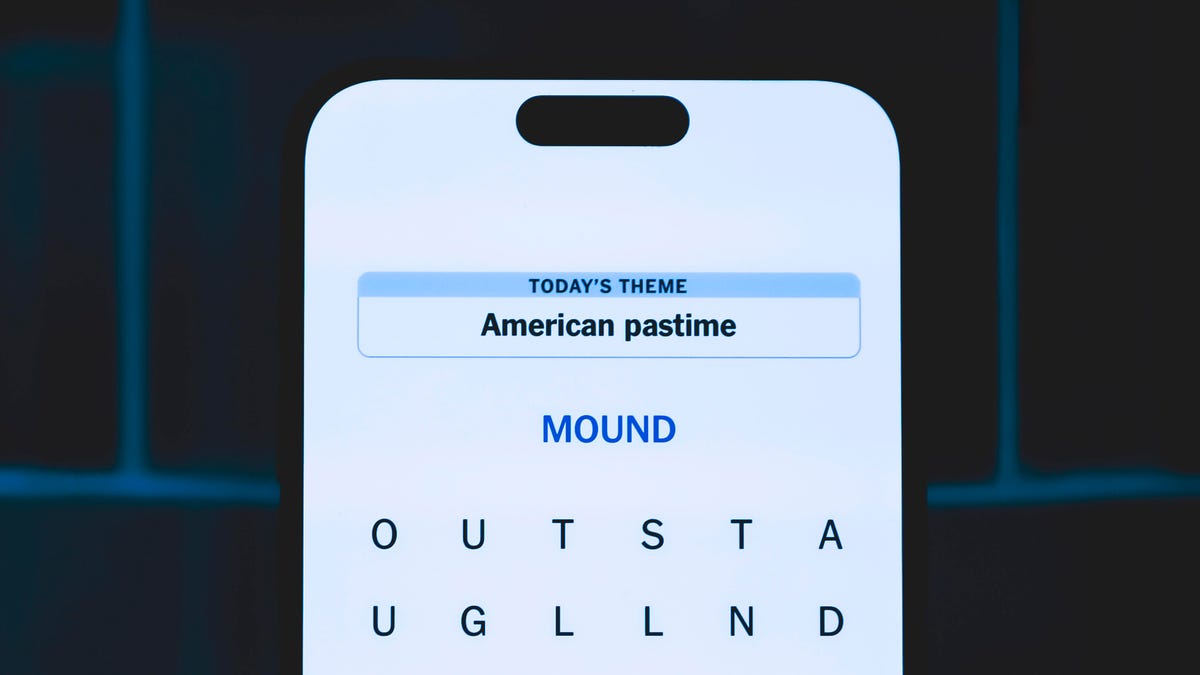Technologies
Woolly mammoths could again walk the Earth in just a few years
Colossal lands $15 million to restore the woolly mammoth to the Arctic. The CRIPSR startup thinks it can birth calves in four to six years.

You’ve heard of startups building computer chips, delivery drones and social networks. One called Colossal has a very different goal: bring the woolly mammoth back from extinction by 2027 using CRISPR, a revolutionary gene-editing technology.
The plan isn’t to re-create true woolly mammoths, but instead to bring their cold-adapted genetic traits, which include small ears and more body fat, to their elephant cousins, creating a hybrid that can wander the tundra where mammoths haven’t been seen for 10,000 years. Colossal’s co-founders are Chief Executive Ben Lamm, who started five companies before this, and George Church, a Harvard Medical School professor with deep CRISPR expertise.
«Our true North Star is a successful restoration of the woolly mammoth, but also its successful rewilding into interbreeding herds in the Arctic,» Lamm said. «We’re now focusing on having our first calves in the next four to six years.»
It’s an interesting illustration of an imperative sweeping the tech world: Don’t just make money, help the planet, too. Tesla’s mission is to electrify transport to get rid of fossil fuels that hurt Earth. Bolt Threads wants to replace leather with a fungal fiber-based equivalent that’s easier on the environment than animal agriculture. Colossal hopes its work will draw attention to biodiversity problems and ultimately help fix them.
Colossal has raised $15 million so far, led by investment firm Tulco. The startup’s 19 employees work at its Dallas headquarters and in offices in Boston and Austin, Texas, and it’s using its funds to hire more.
Artificial wombs and other technology spinoffs
Church said he expects spinoffs from the company’s biotechnology and genetics work.
«The pipeline of large scale genome engineering techniques can be applied to many other applications beyond de-extinction, and therefore [are] most promising for commercialization,» he said.
One technology ripe for commercialization is multiplex genome engineering, a technique Church helped develop that speeds genetic editing by making multiple changes to DNA at once.
Colossal also hopes to develop artificial wombs to grow its mammoth embryos. Just growing 10 woolly mammoths with surrogate elephant mothers isn’t enough to get to the large-scale herds the company envisions.
At the foundation of Colossal’s work is CRISPR. This technology, adapted from a method bacteria evolved to identify attacking viruses and chop up their DNA, is now a mainstay of genetic engineering, and Church has been involved since CRISPR’s earliest days.
There are other ways Colossal hopes to help. Its gene editing technology could artificially add genetic diversity to species with only small surviving populations, Lamm said.
Jurassic Park-style tourism? Nope
Selling or licensing spinoff technology is a somewhat indirect way of running a business. A more direct option is selling tickets to tourists. After all, humans already pay lots of money to see charismatic megafauna like lions, elephants and giraffes on African safaris. Seeing a creature that’s been gone for 10,000 years could add to the excitement.
But that’s not Colossal’s game plan. «Our focus is on species preservation and protection of biodiversity right now, not in putting them in zoos,» Lamm said. By re-creating woolly mammoths, Colossal can preserve the genetic legacy of Asian elephants that now are endangered.
Another candidate species Colossal wants to re-create is the woolly rhinoceros, a relative to the critically endangered Sumatran rhino.
Although Colossal doesn’t plan to build a tourist destination, it does have a woolly mammoth rewilding site in mind that sounds awfully close to Jurassic Park: Pleistocene Park. This area of about 60 square miles in northern Russia, named after the geologic period that ended with the last ice age, is where researchers Sergey and Nikita Zimov are trying to test their theories about the ecological and climatic effects of rewilding.
One Zimov idea is that woolly mammoths will trample snow and knock down trees. That, in turn, will restore grasslands that reflect more of the sun’s warming rays and eliminate insulating snow and forests so the ground cools more. And that means the ground will stay frozen instead of releasing its current store of carbon dioxide and methane greenhouse gases. About 260 billion to 300 billion metric tons of carbon could be released from thawing permafrost by 2300, scientists calculate, exacerbating the weather extremes and other problems caused by climate change.
Is species de-extinction a good idea?
There’s an appeal to the idea of de-extinction. Humans have dramatically altered the planet, and the United Nations estimates we threaten 1 million species with extinction as a result.
Colossal hopes its work will raise more attention to the biodiversity collapse. And it also plans to create detailed genetic descriptions of many endangered species «so we have the recipe if that species does go extinct,» Lamm said.
But is that really the best use of our resources to help the planet? No, some researchers believe.
Resurrecting species could have some benefits, but money would be better spent protecting ones that are still around, a group of biologists argued in one paper published in Nature Ecology & Evolution. «Potential sacrifices in conservation of extant species should be a crucial consideration in deciding whether to invest in de-extinction or focus our efforts on extant species,» the researchers wrote.
But this isn’t government money Colossal is talking about, and Lamm argues that his startup’s work complements other conservation efforts. And, he argues, startups can move faster than government-funded work.
In a world dominated by climate crisis headlines, a startup that makes money with an ecosystem-improvement focus has special appeal. One investor, Zack Lynch of Jazz Venture Partners, is excited by software, hardware and biotech he expects Colossal will create.
At the same time, «these breakthroughs will help address issues such as land degradation, animal pollinator loss and other negative biodiversity trends,» Lynch said. Given how big our environmental problems are, you can see why an investor might be interested.
Technologies
Today’s NYT Connections Hints, Answers and Help for Jan. 7, #941
Here are some hints and the answers for the NYT Connections puzzle for Jan. 7, #941

Looking for the most recent Connections answers? Click here for today’s Connections hints, as well as our daily answers and hints for The New York Times Mini Crossword, Wordle, Connections: Sports Edition and Strands puzzles.
Today’s NYT Connections puzzle is rather tricky. The purple category is especially mystifying. Read on for clues and today’s Connections answers.
The Times has a Connections Bot, like the one for Wordle. Go there after you play to receive a numeric score and to have the program analyze your answers. Players who are registered with the Times Games section can now nerd out by following their progress, including the number of puzzles completed, win rate, number of times they nabbed a perfect score and their win streak.
Read more: Hints, Tips and Strategies to Help You Win at NYT Connections Every Time
Hints for today’s Connections groups
Here are four hints for the groupings in today’s Connections puzzle, ranked from the easiest yellow group to the tough (and sometimes bizarre) purple group.
Yellow group hint: Lookalikes.
Green group hint: Part of something.
Blue group hint: National symbol.
Purple group hint: Squish down.
Answers for today’s Connections groups
Yellow group: Doppelgänger.
Green group: Portion.
Blue group: Common flag symbols.
Purple group: Pressed using a press.
Read more: Wordle Cheat Sheet: Here Are the Most Popular Letters Used in English Words
What are today’s Connections answers?
The yellow words in today’s Connections
The theme is doppelgänger. The four answers are clone, double, mirror and ringer.
The green words in today’s Connections
The theme is portion. The four answers are concern, interest, share and stake.
The blue words in today’s Connections
The theme is common flag symbols. The four answers are crescent, cross, star and stripe.
The purple words in today’s Connections
The theme is pressed using a press. The four answers are cider, garlic, trousers and wine.
Don’t miss any of our unbiased tech content and lab-based reviews. Add CNET as a preferred Google source.
Technologies
Today’s NYT Strands Hints, Answers and Help for Jan. 7 #675
Here are hints and answers for the NYT Strands puzzle for Jan. 7, No. 675.

Looking for the most recent Strands answer? Click here for our daily Strands hints, as well as our daily answers and hints for The New York Times Mini Crossword, Wordle, Connections and Connections: Sports Edition puzzles.
Today’s NYT Strands puzzle is easier than some have been. Once you learn the topic, the words come pretty easily. But if you need hints and answers, read on.
I go into depth about the rules for Strands in this story.
If you’re looking for today’s Wordle, Connections and Mini Crossword answers, you can visit CNET’s NYT puzzle hints page.
Read more: NYT Connections Turns 1: These Are the 5 Toughest Puzzles So Far
Hint for today’s Strands puzzle
Today’s Strands theme is: Open wide.
If that doesn’t help you, here’s a clue: Brace face.
Clue words to unlock in-game hints
Your goal is to find hidden words that fit the puzzle’s theme. If you’re stuck, find any words you can. Every time you find three words of four letters or more, Strands will reveal one of the theme words. These are the words I used to get those hints, but any words of four or more letters that you find will work:
- MIST, SOIL, RICE, LICE, RUDE, LUDE, BRUSH, TOOT, RIDE, RIDER
Answers for today’s Strands puzzle
These are the answers that tie into the theme. The goal of the puzzle is to find them all, including the spangram, a theme word that reaches from one side of the puzzle to the other. When you have all of them (I originally thought there were always eight but learned that the number can vary), every letter on the board will be used. Here are the nonspangram answers:
- DRILL, FLOSS, MIRROR, FLUORIDE, TOOTHBRUSH
Today’s Strands spangram
Today’s Strands spangram is DENTISTSOFFICE. To find it, start with the D that’s five letters down on the far-left row, and wind up and then across.
Don’t miss any of our unbiased tech content and lab-based reviews. Add CNET as a preferred Google source.
Technologies
The Clicks Communicator Phone Is My Favorite Thing at CES
-

 Technologies3 года ago
Technologies3 года agoTech Companies Need to Be Held Accountable for Security, Experts Say
-

 Technologies3 года ago
Technologies3 года agoBest Handheld Game Console in 2023
-

 Technologies3 года ago
Technologies3 года agoTighten Up Your VR Game With the Best Head Straps for Quest 2
-

 Technologies4 года ago
Technologies4 года agoBlack Friday 2021: The best deals on TVs, headphones, kitchenware, and more
-

 Technologies4 года ago
Technologies4 года agoVerum, Wickr and Threema: next generation secured messengers
-

 Technologies4 года ago
Technologies4 года agoGoogle to require vaccinations as Silicon Valley rethinks return-to-office policies
-

 Technologies4 года ago
Technologies4 года agoOlivia Harlan Dekker for Verum Messenger
-

 Technologies4 года ago
Technologies4 года agoiPhone 13 event: How to watch Apple’s big announcement tomorrow
